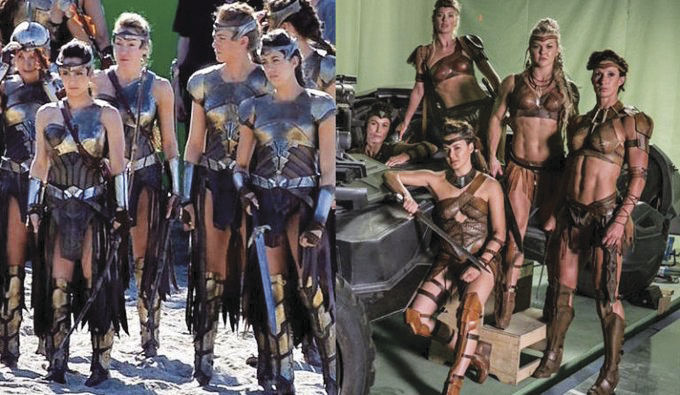A change in Amazon armor illustrates a larger issue of socialized sexism
Audiences from “Wonder Woman” and “Justice League” play an interesting game of “spot the difference.”
The portrayal of women in media is really complex. Our cultural understanding of women is mired in socialized expectations of traditional femininity that have been ingrained within us socially since birth, practically, meaning that this and all the counter-responses are going to make an appearance in the media we consume. Books, video games, TV shows and film, are all going to represent women in some sort of way that relates back to society and some of this representation is bad.
Today we’ll be looking at the new Amazon armor in DC’s recent “Justice League” film, which looks a whole lot less like armor and a whole lot more like Victoria’s Secret tried their hand at metalwork. Then, realizing it was ugly, they donated it to director Zack Snyder, who thought to himself, “Oh boy! Another opportunity to reduce women to sex objects!” But that’s not what happened. Instead, Zack Snyder looked at the armor the Amazons’ wore in the recent “Wonder Woman” film and decided that it was not to his liking, and so he put together a new set of armor for them with a little less emphasis on protection and a little more on sex appeal. The result makes the armor in “Wonder Woman” look really great in comparison (it’s not), while also playing into long withstanding tropes of scantily clad women in media, particularly action films.
There’s a lot going on here, more than can really be covered in 500 words, but let’s start off simple and go from there. This is an example of sexism. The need for female characters to expose more skin than their male counterparts stems from a need to portray women as sexually appealing. This is doubly necessary in action films where the women are active in the fighting as well, because the act of fighting is coded as masculine, meaning that it works against the heteronormative, traditionally feminine expectation of women’s sexuality. To counter this, these women are often forced to fight in clothing that shows off their bodies in such a way as to let men know that while they’re strong, they’re still sexy.
This is because of the male gaze, which is the preoccupation in visual media with how men view their work. This is also why men with exposed chests aren’t considered to be sexualized on the same level because this is done still through the male gaze, meaning it’s not portrayed in a way which sexualizes the character. But that’s a long conversation for another article.
The sexualization of female characters also opens up to a much larger conversation about what is valued in female characters and, by association, women in real life. How women are portrayed in media not only reflects our society, but also alters it. In reducing women to their sexuality, or at least prioritizing it over other character traits, we subtly reinforce notions that this is the primary source of worth in women as opposed to the resourcefulness, cunning and strength that male characters are allowed.
This sucks,but it happens a lot. Because of this, we need to reconsider how we portray women in media and how we treat women in our day to day lives. Otherwise the ugly bikini armor wins.







